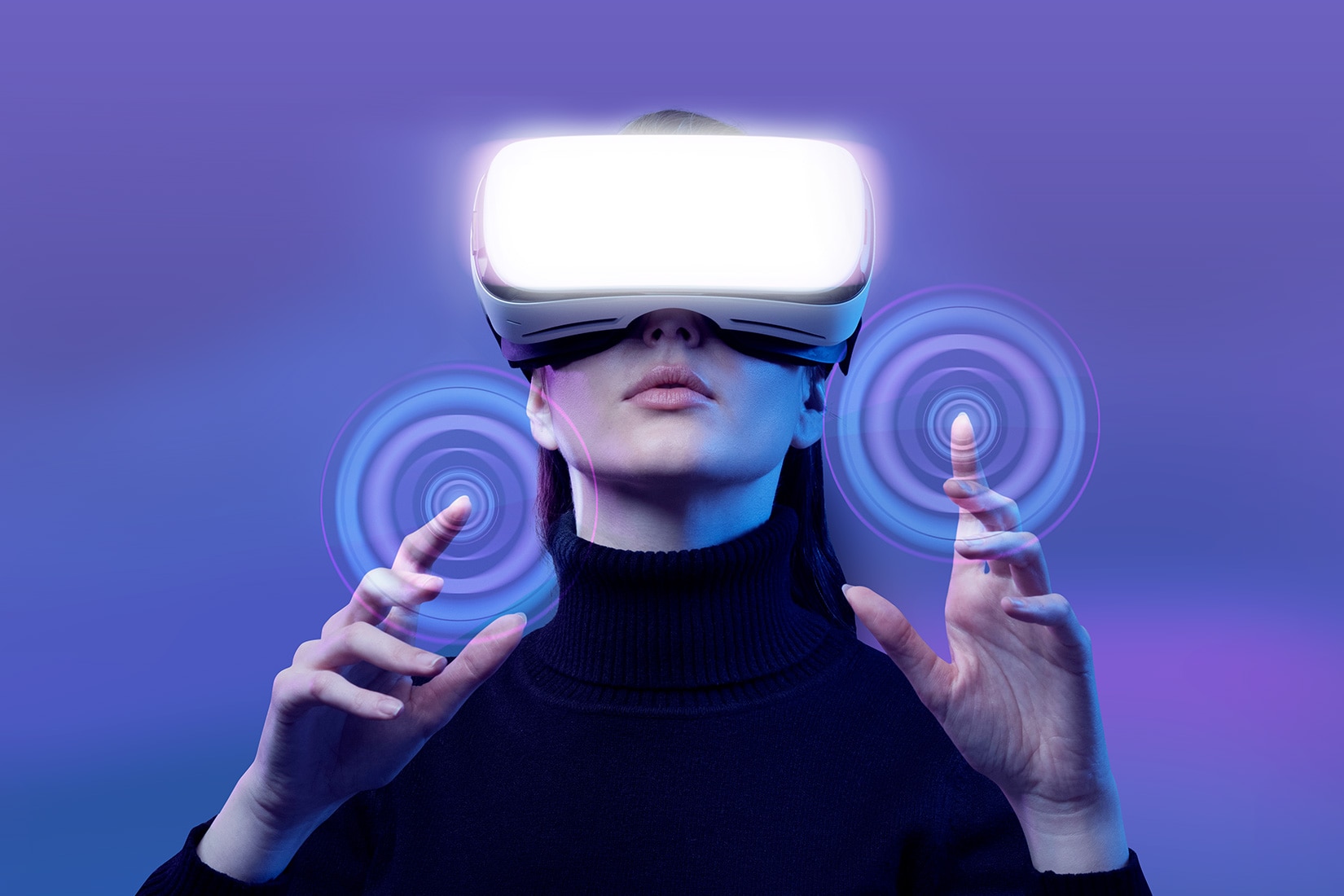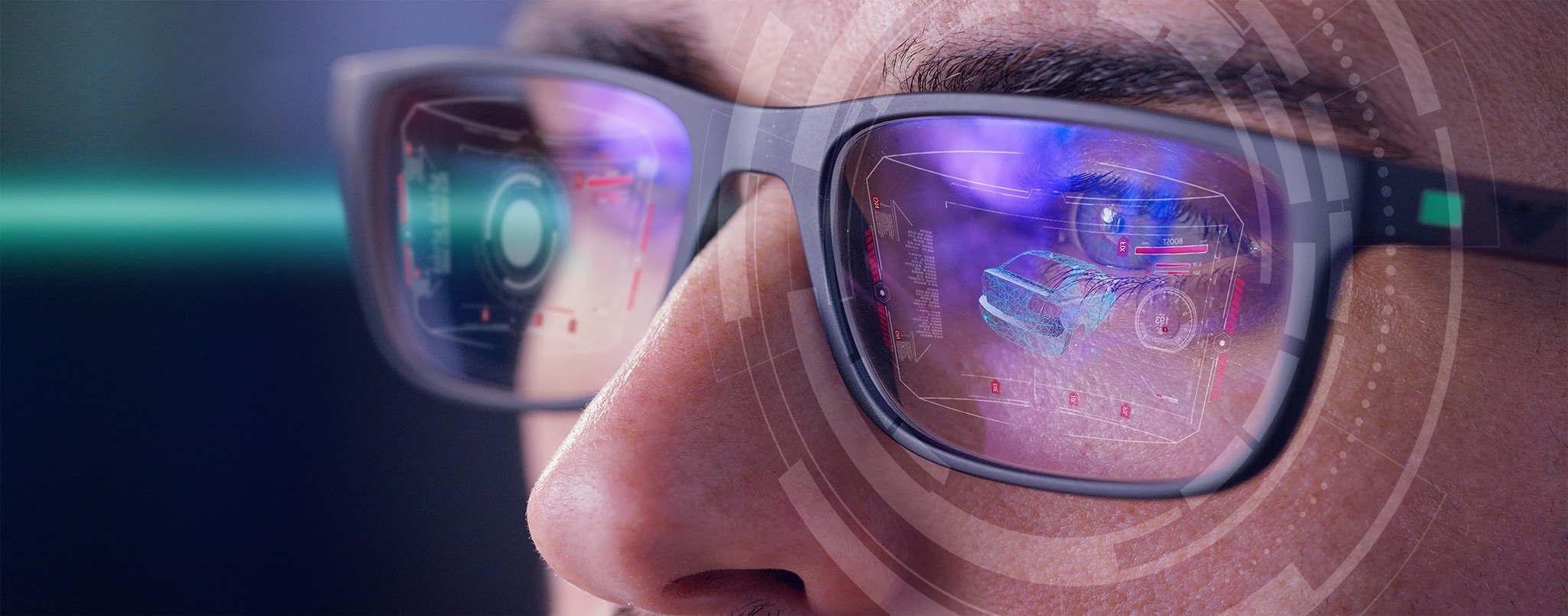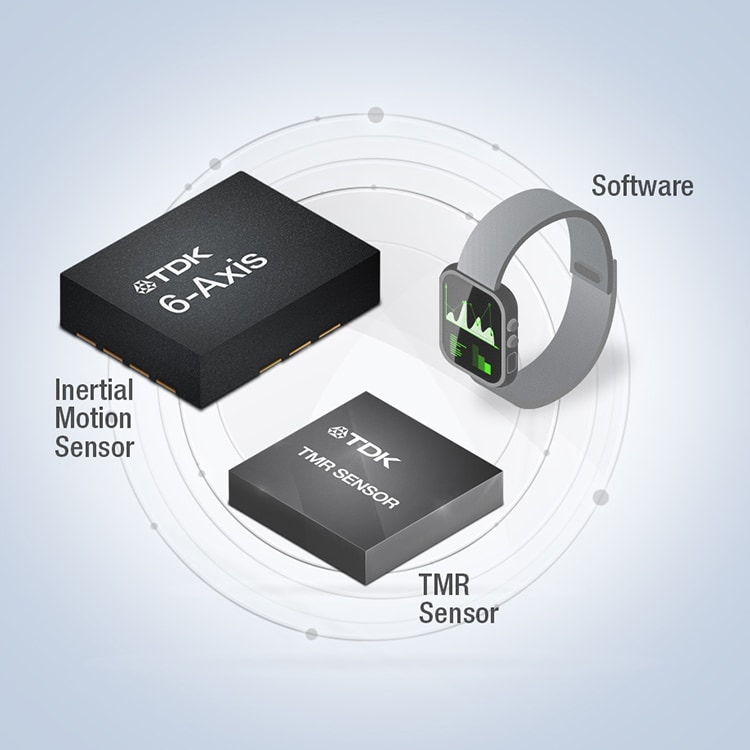

PositionSense™: Advancing Precision and Efficiency in Motion Sensing
Motion sensors that detect the motion of people and objects have become integral to modern life, powering devices such as smartphones, wearables, AR/VR headsets, and navigation systems. The use of these sensors continues to expand, helping users navigate busy urban environments, enhancing immersive virtual experiences, and tracking fitness goals. However, as technology advances, there is growing demand for sensors that offer higher precision, faster responses, and greater efficiency.
The new SmartMotion® PositionSense™ from InvenSense, a TDK Group company, answers this call by leveraging revolutionary tunnel magnetoresistance (TMR) technology and combining a 6-axis inertial measurement unit (IMU) with a 3-axis magnetometer, enabling reliable, power-efficient motion sensing.
Motion Sensor Needs and Issues Until Now
Motion sensors have brought about major changes in our lives, from navigating city streets to controlling drones. Smartphones, for example, rely on sensors for navigation, step tracking, and even screen orientation, and AR/VR systems use precise motion tracking to create realistic, immersive experiences. As these applications grow more advanced, users demand sensors with higher accuracy, lower power consumption, and faster recalibration to meet their needs. Yet, as the market grows, the new challenges described below have appeared.

Challenges with Motion Sensor Technology
1. Magnetic Interference
Magnetometers are highly sensitive to magnetic fields from chargers, battery packs, and accessories. This interference can distort readings and necessitate recalibration, which is often time-consuming.
2. Drift and Recalibration
Motion sensors can accumulate minor errors over time, leading to errors known as drift.*1 Recalibration is necessary to correct these errors, but the process is often resource-intensive, increasing power consumption.
3. High Power Consumption
Many motion sensors consume significant amounts of power. This can shorten battery life, creating a trade-off between battery size and usability, especially for portable devices like wearables.
Introducing PositionSense™ and Its Innovative Technology
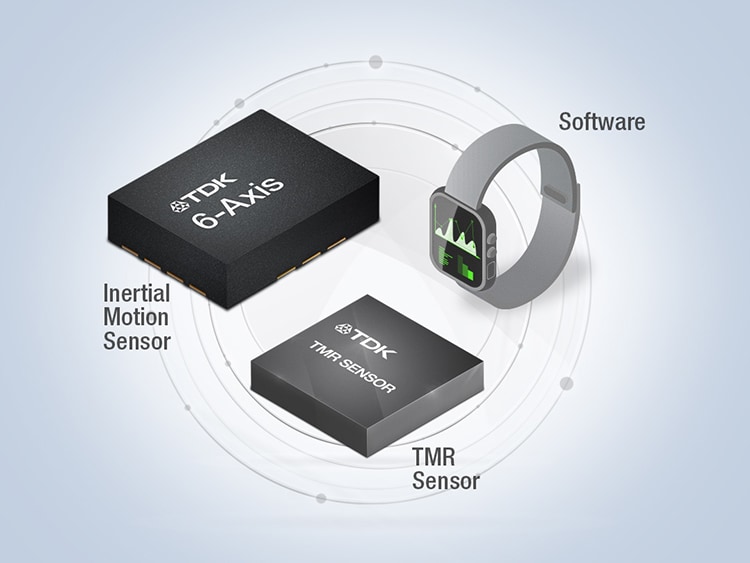
PositionSense™ integrates a 6-axis IMU with a TMR sensor
TDK developed PositionSense™, an innovative motion sensing system, to address these challenges. As a 9-axis sensor system, PositionSense™ comprises two chips that combine a 6-axis IMU with a 3-axis magnetometer, providing precise motion tracking, instant recalibration, and best-in-class power efficiency. At the heart of its performance are two key technologies: TMR technology and an enhanced embedded digital motion processor (eDMP).*2 By using these technologies, PositionSense™ achieves more accurate and efficient sensing, and as a result, it is expected that it will be adopted for a wide variety of applications.
・ Tunnel Magnetoresistance (TMR) Technology
Compared to earlier technologies like Hall sensors and anisotropic magnetoresistance (AMR) technology, TMR offers lower power consumption, higher sensitivity, and improved noise performance. These advantages enable PositionSense™ to provide accurate heading and orientation data while using minimal energy, making it ideal for battery-powered devices.
・ Enhanced Embedded Digital Motion Processor (eDMP)
The eDMP performs key functions, such as calibrating and integrating data from the IMU and magnetometer. By handling these tasks internally, PositionSense™ reduces the workload on the device’s central processor, improving overall efficiency and freeing up system resources for other applications.
TMR Sensor for Magnetometer
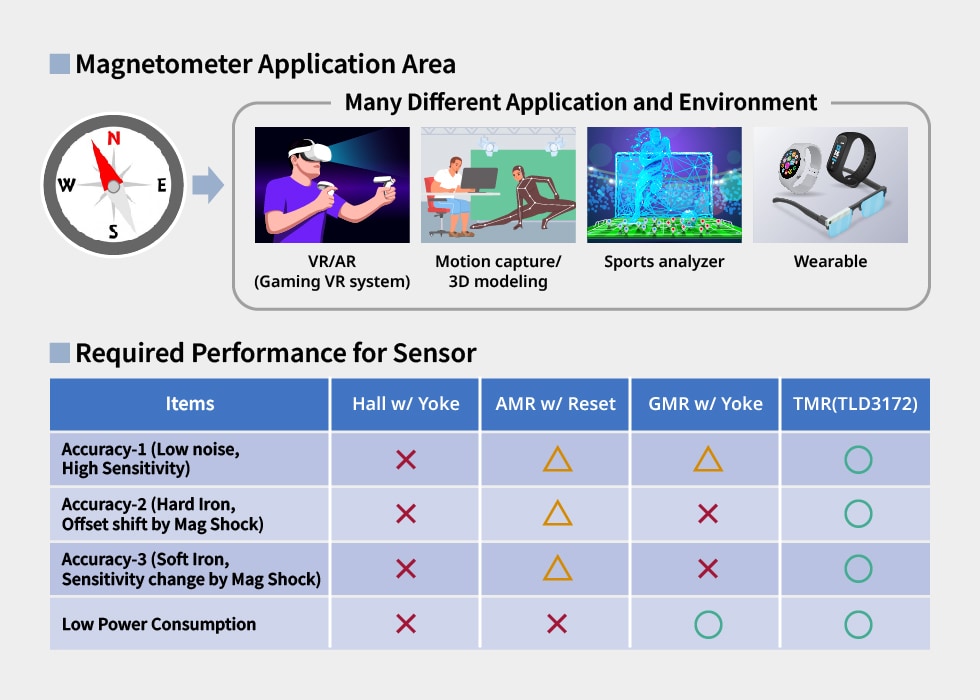
PositionSense™ Transforms Everyday Experiences
PositionSense™ is designed to address practical challenges across various applications and is expected to enhance the performance and usability of various devices currently in use.
・ Smartphones
Even in urban areas with weak GPS signals or interference from magnetic fields, PositionSense™ provides instant recalibration and precise heading estimation, ensuring accurate navigation.
・ AR/VR Headsets
PositionSense™ minimizes drift with accurate motion tracking and provides accurate head and controller tracking to ensure smooth operation. In addition, PositionSense's low-power consumption enables users to enjoy long operating times.
・ Wearables
PositionSense™ provides value in applications that emphasize safety, such as monitoring a child’s location in a crowded area and detecting falls by the elderly.
・ True Wireless Stereo (TWS) Earbuds TWS earbuds use PositionSense™ to accurately track user head movement and orientation when playing games, taking calls, or watching movies, improving the accuracy of spatial audio, thereby enhancing the sense of immersion.

Unlocking New Possibilities
Moreover, PositionSense™ uses innovative technologies to open the door to various new applications and industries. Motion sensing will be critical technology for enabling more advanced functionality as devices become smarter.
・ Navigation systems
PositionSense™ can provide precise heading information for vehicles, wearable devices, and even autonomous robots, increasing the accuracy of navigation.
・ Healthcare
Wearable devices equipped with PositionSense™ could enable more accurate activity tracking and fall detection, enhancing safety in healthcare and nursing care settings.
・ Industrial automation and robotics
Using PositionSense’s high-precision motion tracking can improve efficiency in manufacturing and logistics.
・ Gaming peripherals, power tools, and IoT devices PositionSense™ addresses the limitations of conventional sensors, enabling developers to innovate without compromise, making the creation of more intelligent and efficient devices possible.


Vice President, Software Engineering,
InvenSense US HQ
Looking back on the development of PositionSense™, Rosa Chow, Vice President of Software Engineering at InvenSense, a TDK Group company, commented, "Developing PositionSense™ was a complex process that required balancing precision, efficiency, and adaptability to meet the diverse demands of modern applications. One of our biggest challenges was achieving seamless recalibration in environments with high magnetic interference, such as those caused by wireless chargers or other accessories. By integrating advanced TMR technology and on-chip calibration software, we overcame these obstacles, delivering a solution that performs reliably in real-world conditions and sets a new benchmark for power efficiency."
TDK’s PositionSense™ overcomes the challenges of conventional sensors by integrating TMR technology, a 6-axis IMU, and an enhanced eDMP. As a result, PositionSense™ enables next-generation motion sensing with accuracy, efficiency, and reliability. Widespread adoption of this innovative technology will make possible the emergence of smarter and higher-performance devices, driving significant advancements in the future of motion sensing technology. For detailed product information, visit the InvenSense Website:
TDK PositionSense 9-axis Sensor Solution - IMU + TMR + Software for Absolute Orientation Detection
Terms
- Drift: Changes in sensor measurements that occur over time due to factors such as changes in temperature, air pressure, and magnetic fields.
- eDMP :A digital processor is embedded to enable more efficient data processing by motion sensors. The processor also plays a role in reducing the load on the device’s CPU, cutting power consumption, and improving response speed.


